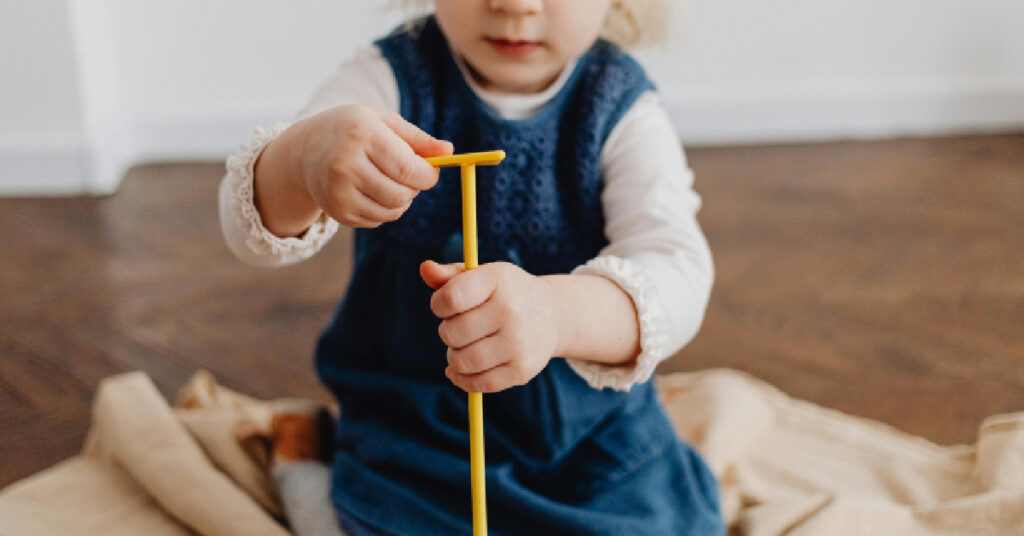
15 Best Toys for Building Independence — That Aren’t Boring or Overhyped
From magnetic tiles to dolls and pretend kitchens, these 15 toddler toys are actually worth the shelf space — and designed to encourage solo play

Lorem ipsum dolor sit amet, consectetur adipiscing elit. Ut elit tellus, luctus nec ullamcorper mattis, pulvinar dapibus leo.
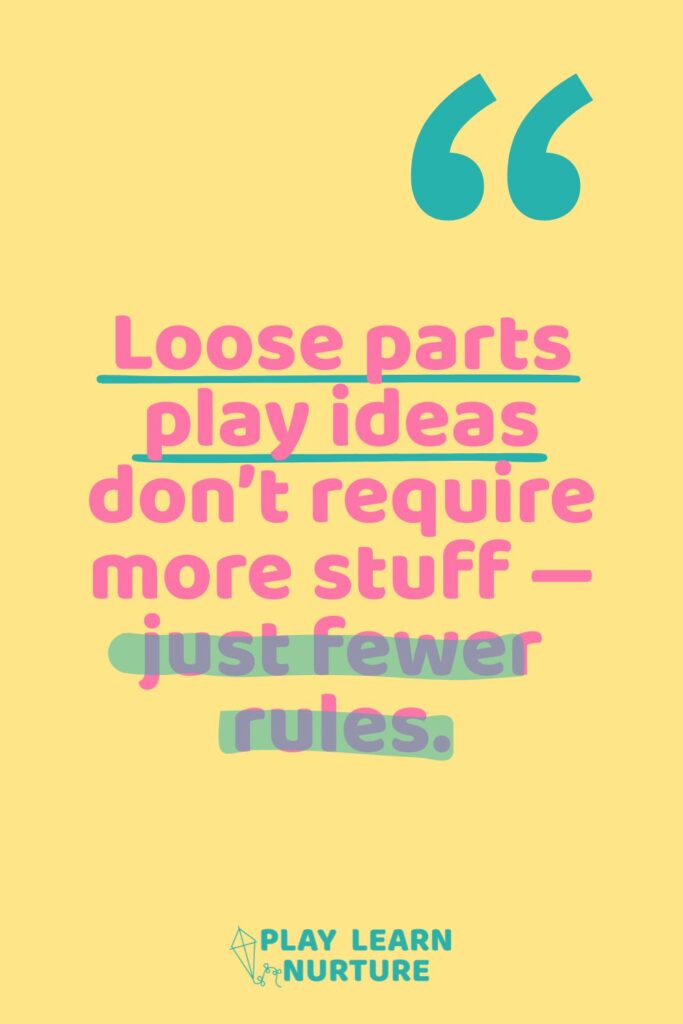
Loose parts play is the kind of magical, open-ended play that doesn’t come with instructions — and that’s exactly why it works.
At its core, it’s about giving your child access to a variety of everyday materials that can be used in multiple ways. These are objects they can move, stack, sort, combine, roll, pretend with, or totally ignore if they feel like it. Nothing beeps. Nothing tells them what to do. And there’s no “right” outcome.
Think:
A ribbon can be a river, a tail, or a magic rope.
A lid can be a steering wheel, a coin, or a turtle shell.
A wooden ring can be a doughnut, a building block, or a baby’s bracelet.
That’s the magic of loose parts play ideas — they flex and change depending on your child’s imagination, mood, or current obsession (looking at you, dinosaur-teddy-superhero crossover phase).
And yes — while it might look like your toddler is just dumping pegs into bowls and calling it a cafe, their brain is doing way more than you think. Loose parts play boosts:
Focus and attention span
Confidence in decision-making
Emotional regulation through repetitive motion
Problem-solving and creativity
Independence (hello, solo play!)
It’s one of the simplest, lowest-prep ways to support real developmental growth. And spoiler: you already have half of what you need in your kitchen drawer.
That’s why loose parts play ideas are a staple in so many yes spaces, Montessori shelves, and creative toddler routines. You can adapt them to your child’s age, interests, and energy level — no fancy toy hauls required.
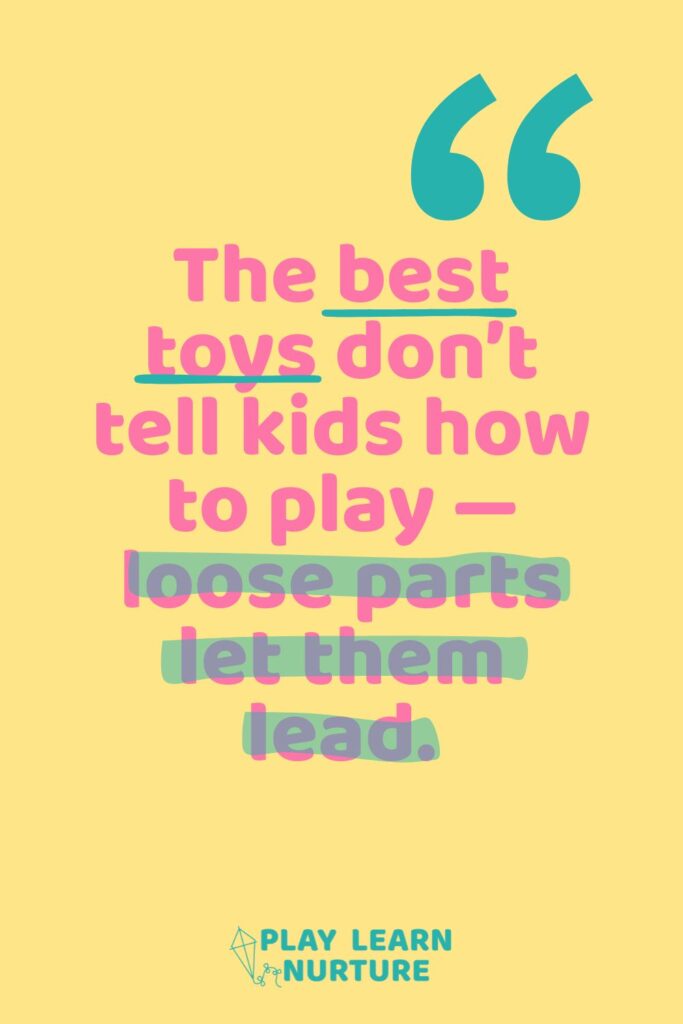
If you’ve ever tried to create a play area that feels inviting but not overwhelming, flexible but still safe, then congratulations — you’re already halfway to a yes space. And the secret ingredient that takes a yes space from meh to magical? Yep. It’s loose parts play ideas.
Loose parts are the MVP of yes spaces because they:
Don’t overstimulate
Encourage calm, curious exploration
Require zero setup once the tray is out
Work just as well solo as they do with siblings nearby
And for you? They mean less hovering, fewer “muuuum, I’m bored” complaints, and way more hot drinks enjoyed while still warm.
The beauty of loose parts play ideas in a yes space is how adaptable they are:
You can use what you already have
They rotate easily without needing new toys
They support all ages — just swap out the parts as your child grows
They’re ideal for building the focus toddlers need to actually play independently
Plus, because a tray of loose parts is simple and self-directed, it gives your toddler freedom without chaos — which is the entire goal of a yes space.
Read More: Yes Space for Toddlers: 10 Tips for Creating Safe, Independent Play Zones
Read more: How to Start Independent Play and Finally Enjoy 5 Minutes of Peace
One of the best parts about using loose parts? They grow with your child. Whether your little one is still chewing on everything or narrating full pretend adventures, there are loose parts play ideas that meet them where they’re at.
Below, you’ll find simple tray setups tailored to different age groups — all low-prep, high-impact, and totally flexible depending on what you already have at home.
At this stage, it’s all about sensory exploration and discovering what objects do.
Tray ideas:
Large plastic lids + silicone cupcake moulds
Wooden spoons + fabric squares (texture & noise)
Cardboard tubes + soft balls (drop & roll!)
Silicone bangles + a basket
DIY shaker jars filled with pasta or rice (sealed!)
Keep it big, safe, and sensory-rich. Sit nearby and let them lead.
Now your toddler is stacking, filling, and transferring like a champ. Keep items safe but introduce more variety.
Tray ideas:
Oats or rice + scoops + measuring spoons
Pegs + small bowls for sorting
Empty thread spools + pipe cleaners
Large buttons + silicone cupcake trays
Rings + wooden dowel (posting play)
Play is still mostly physical and repetitive — which is great for brain development and solo focus.
Now we start seeing pretend play emerge! Keep offering trays that encourage sorting, combining, and inventing.
Tray ideas:
Animal figurines + lids as “habitats”
Felt shapes + bottle caps + scoop
Wooden blocks + cotton rounds + tongs
Old keys + padlocks or small boxes
Scarves + baskets = laundry, blankets, or rivers
This age thrives on mixing real-world themes with fantasy. Loose parts give them room to do both.
Your preschooler’s storytelling game is strong — time to lean into imaginative play and mini-worlds.
Tray ideas:
Pinecones + felt flames = campfire play
Pebbles + string + cardboard cutouts = nature shop
Mini jars + herbs/spices (unscented if sensitive!) = pretend potions
Play silks + toy people = dress-up, tents, capes
Curtain rings + sticks = stacking and fine motor fun
Use themed trays to match their current obsessions: cafes, post offices, dinosaurs, whatever they’re on this week.
Older toddlers and preschoolers want more control and challenge — let their play go deeper, even if it gets messier.
Tray ideas:
Play dough + loose parts = sculptures & stamping
Fabric scraps + pegs = fashion designer setup
Bowls + scoops + pom poms = sorting challenge with tongs
Found items + glue stick = collage play
Nature tray: sticks, stones, leaves, seed pods
These setups are perfect for longer bursts of independent play — and they’re still light on cleanup if you stick to a tray.
Great for siblings or playdates, these trays let kids collaborate or parallel play without needing the exact same skill level.
Tray ideas:
Ribbon, bangles, and old jars
Scarves, cups, and cardboard boxes
Bottle caps, small toys, and containers
Fabric scraps + animal figurines = build-a-world
Pegs + rubber bands + muffin tray = endless combos
The best part? You don’t have to “teach” them what to do. Just put it out and watch the magic happen.
Here’s your reminder that you don’t need a Pinterest-worthy craft stash to get started. Some of the best loose parts play ideas are already scattered through your kitchen drawers, laundry basket, or garden.
Before you run out to buy anything new, take a wander through your home with a basket and an open mind — chances are, you’ll find more than enough to set up 5 or 6 awesome trays.
Measuring cups and spoons
Silicone muffin cases
Plastic lids
Wooden spoons
Cookie cutters
Napkin rings
Recycled spice jars (clean + label-free)
Scarves or old fabric scraps
Socks (yep, solo ones count!)
Bangles or costume jewellery
Curtain rings
Pegs or clothespins
Old keys
Empty tissue boxes or cereal cartons
Pinecones
Smooth rocks
Leaves
Sticks
Seed pods or gum nuts
Shells (great for sensory & sorting)
Bottle caps
Toilet rolls
Cardboard trays
Paper towel tubes
Egg cartons
Coffee pods (cleaned!)
Use what you have, and then if you fall in love with the concept, you can start collecting a few purpose-made items like wooden coins, felt pieces, or small bowls.
Simple objects = big play potential. That’s the beauty of loose parts play ideas — they meet your child’s imagination where it’s at and grow with them over time.
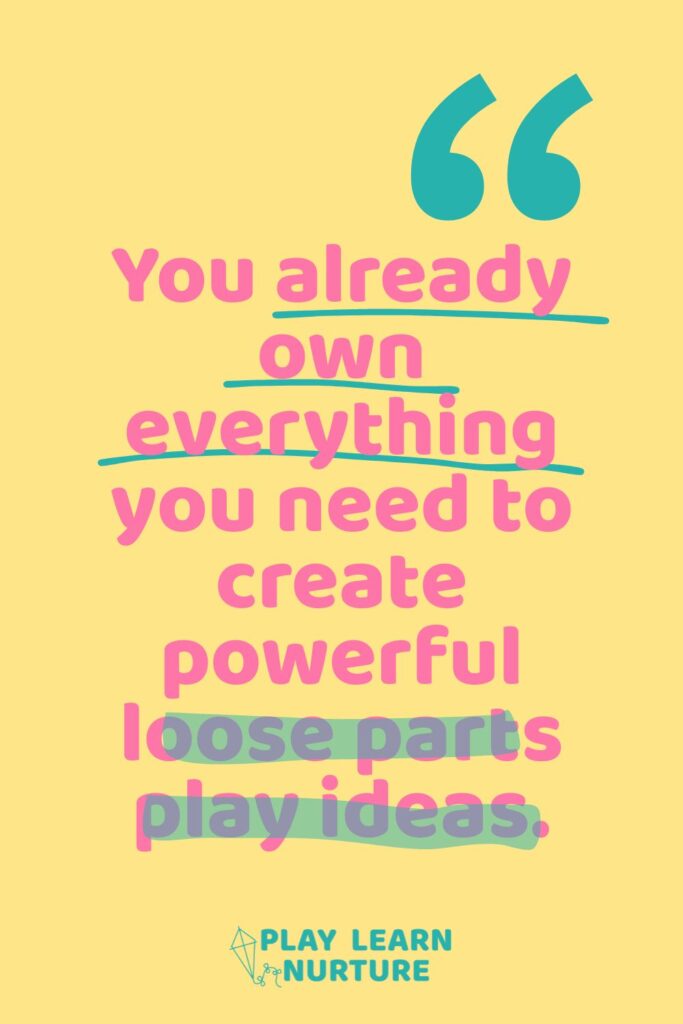
The beauty of loose parts play is that it doesn’t need to be complicated. In fact, the simpler the setup, the more your child’s imagination can take over.
Whether you’re prepping an intentional play invitation or just winging it between snacks and chaos, these steps will help you put together a tray your toddler will actually want to use.
Grab a tray, low basket, or even a shallow cardboard box. Keep it flat, contained, and easy for little hands to access.
Look around the house or outdoors and gather a mix of textures, shapes, and sizes. For example:
Wooden rings
Bottle caps
Fabric scraps
Pebbles or pinecones
Bangles and spoons
The best loose parts play ideas usually come from mixing the ordinary with the unexpected.
Throw in a scoop, pair of tongs, small bowl, or even a cardboard tube. This adds another layer of exploration without overwhelming them.
Put the tray in your yes space, on a shelf they can reach, or near where you’re working. Toddlers are more likely to engage when you’re nearby, especially if independent play is still new.
Seriously. Don’t narrate, ask questions, or jump in. Just observe. Watch how they use the objects, remix the setup, or ignore it completely and come back later.
And here’s your bonus mum win: once your child is familiar with the rhythm of trays, you’ll be able to prep future loose parts play ideas in under five minutes flat.
Here’s the deal: yes, safety matters. But no, you don’t have to turn your playroom into a risk-free bubble to enjoy the magic of loose parts play ideas.
The key is age-appropriate freedom — and knowing when to step back vs. when to keep an eye out.
Under 3? Avoid anything smaller than a ping pong ball unless you’re actively supervising.
Still mouthing everything? Stick to larger, non-toxic materials like fabric scraps, big rings, wooden spoons, and lids.
You don’t need to micromanage every scoop and stack. Just stay nearby, especially with younger toddlers or new trays.
Set them up in a yes space and sit with your coffee within view.
Some kids explore with their mouths more than others. Some are naturally rougher.
Adapt your loose parts play ideas to your child’s temperament. When in doubt, simplify the tray.
Great question. Here’s a general guide:
✅ Yes space friendly: wooden rings, large blocks, lids, fabric, big spoons, baskets
❌ Supervision required: pebbles, buttons, small caps, anything that fits inside a toilet paper roll
If you’re keeping loose parts play ideas on shelves, group items by type and label with pictures. It makes cleanup easier and empowers toddlers to help reset trays.
Loose parts play is meant to invite curiosity — not fear. With a little prep and a lot of common sense, it can be one of the safest, most enriching play methods around.
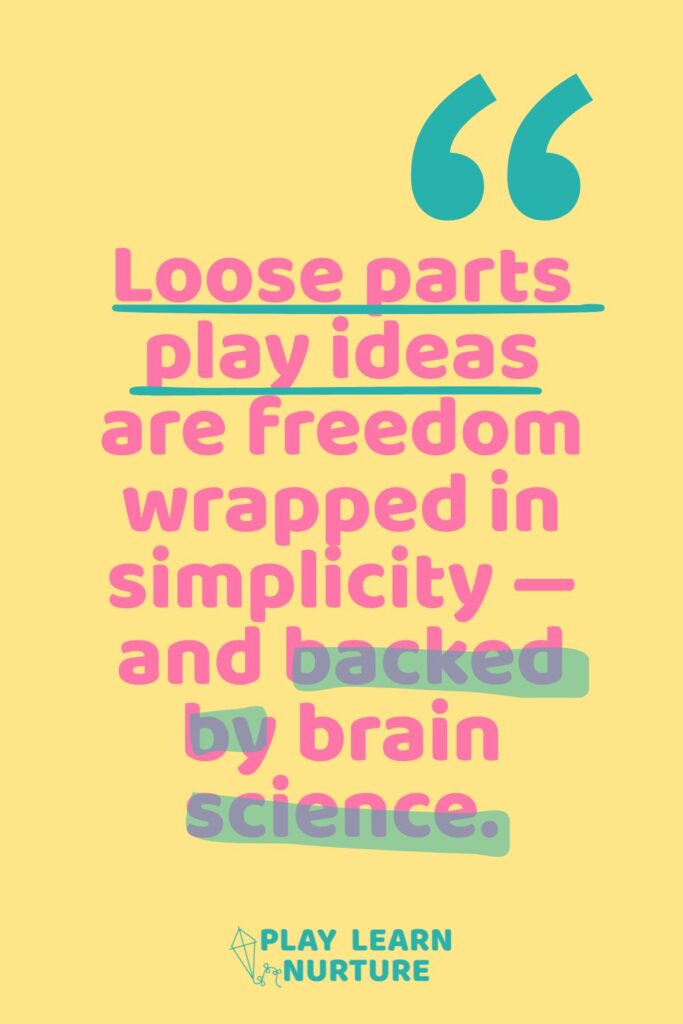
Need ideas to get started without scrolling Pinterest for hours? I’ve got you. Below are loose parts play ideas grouped by themes — each one simple to prep, packed with potential, and powered by your toddler’s imagination.
Remember: mix and match items based on what you already have. There’s no wrong combo as long as it’s safe and sparks curiosity.
Muffin tin + pom poms + tongs
Pegs + ribbon + cardboard box (DIY clothesline)
Tissue box + scarves (peekaboo or “laundry day”)
Lids + cups + soft balls (rolling game)
Felt squares + spoons = make-your-own soup
Pinecones + flower petals + sticks = fairy garden
Rocks + chalk + recycled tray = rock painting station
Leaves + cups + fabric = nature cafe
Water table + scoops + bottle lids
Old pot + sticks + dirt = mud kitchen magic
Egg carton + bottle caps = sorting game
Cardboard rolls + string + rings = pulley play
Yoghurt lids + stickers = “coins” for pretend play
Paper towel tubes + ping pong balls = ramp race
Milk caps + pegs + cereal box = counting tray
Wooden rings + felt pieces = doughnuts or treasure
Scarves + pegs = dress-up boutique
Shells + beads + scoops = ocean sensory setup
Jars + herbs + spoons = pretend potion station
Small boxes + animal toys = mini zoo scene
Tweezers + cotton balls + ice cube tray
Pegs + rubber bands + colander
Buttons + threading lace
Spoon + mini pom poms + cups (transferring tray)
Coins + slot cut in cardboard = DIY bank
Mixed textures tray: fabric, foil, sponge, paper, netting
Light and shadow: flashlight + translucent items
Sensory basket: ribbon, bangles, scarves, jars
“Mystery bag” with surprise loose parts inside
Colour sorting: bowls + coloured objects + scoops
You can rotate these setups weekly, combine themes, or let your child take the lead in creating their own tray. That’s the beauty of loose parts play ideas — there’s no one way to do it, and the options never run out.
If there’s one thing I hope you take from this, it’s that loose parts play ideas aren’t about creating a picture-perfect tray or sourcing rare wooden toys from boutique shops.
It’s about this:
Giving your child the freedom to create their own world
Letting go of play that beeps, flashes, or needs batteries
Trusting that simplicity can be powerful
Knowing that imagination thrives when there’s space to explore
Whether you’re tossing together a five-minute tray from the junk drawer or slowly building a rotation shelf over time — you’re doing it right. Because you’re saying yes to curiosity, yes to independent play, and yes to less pressure for both of you.
So go raid the kitchen drawer. Dig through the laundry basket. Pop a scarf and some bottle caps in a tray.
That’s where the magic starts.
Because the best loose parts play ideas don’t come from a catalog — they come from your child’s imagination (and your real-mum resourcefulness).
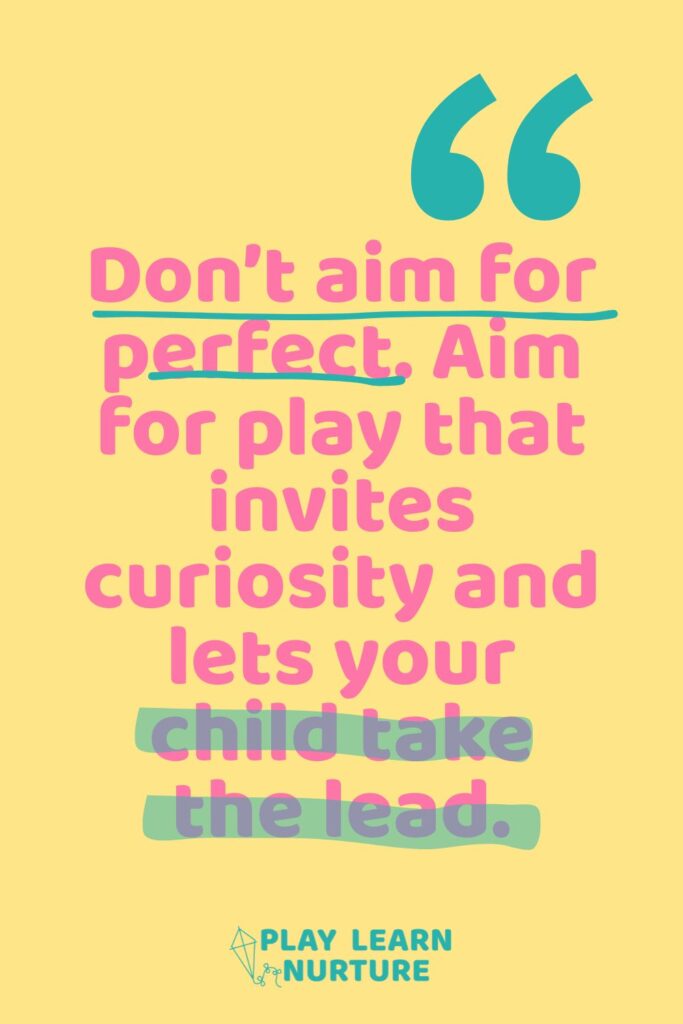

From magnetic tiles to dolls and pretend kitchens, these 15 toddler toys are actually worth the shelf space — and designed to encourage solo play
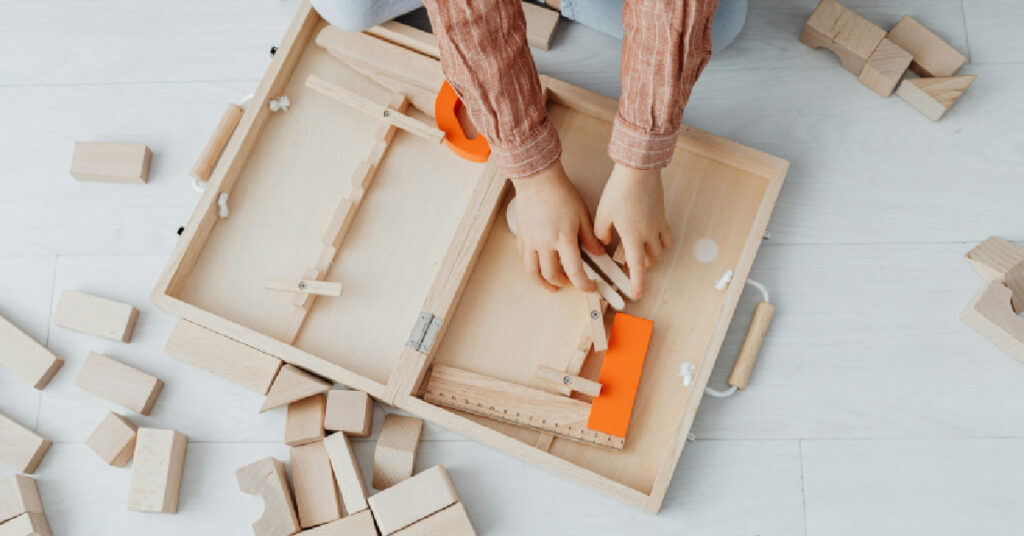
Delve into the world of loose parts play with our selection of toys that inspire exploration and innovation. Perfect for enhancing your toddler’s sensory and
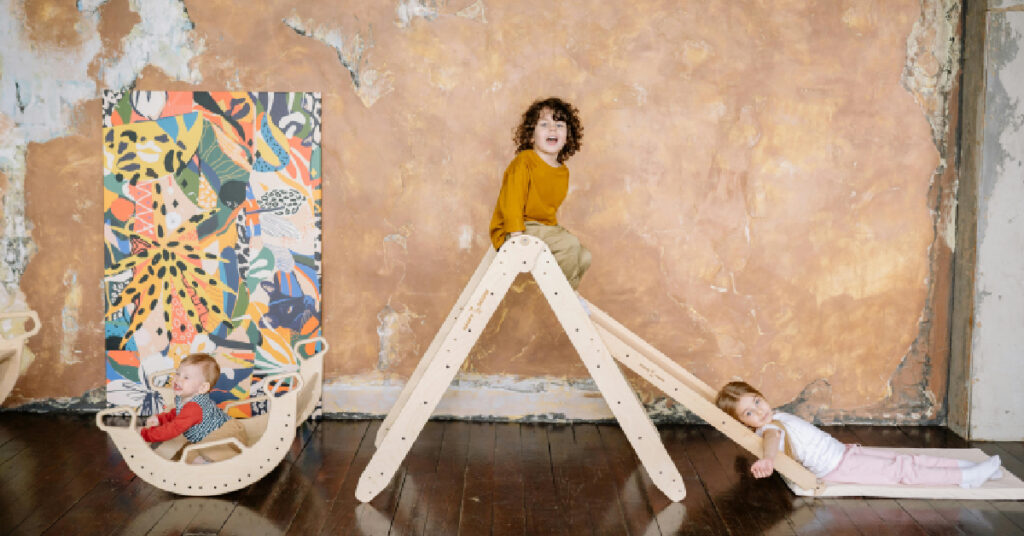
Simple, real-life play space ideas for toddlers that spark imagination, support independence, and give you a moment to breathe — no Pinterest-perfect setup required.
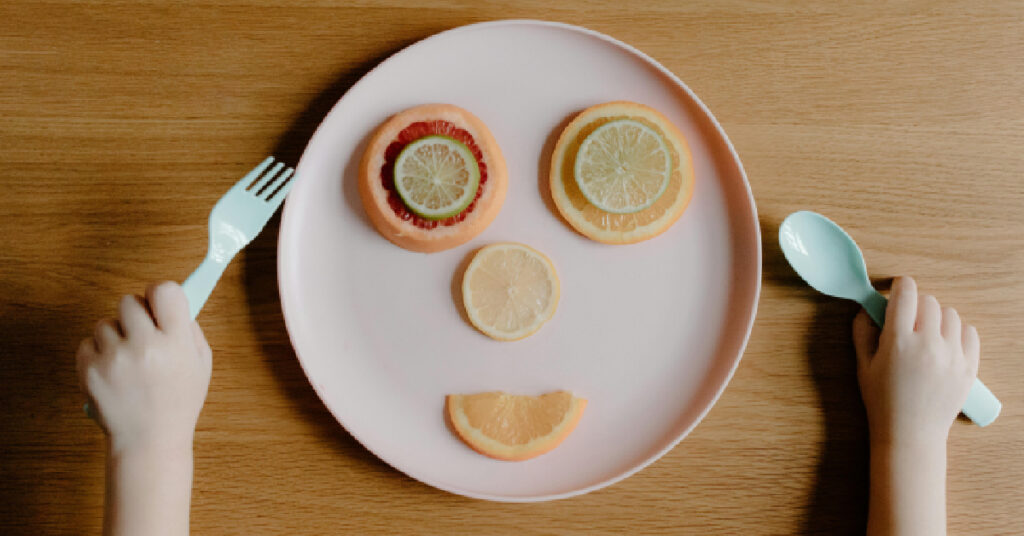
When the milk spills, the toddler tantrums, and your patience snaps before 9AM — you’re not failing. This is one mum’s story of surviving the
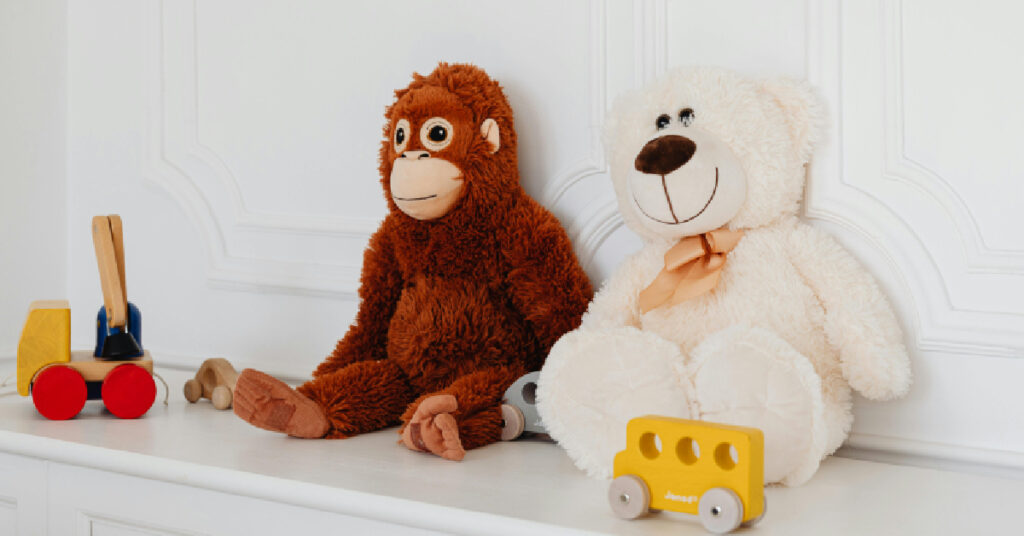
Discover how a simple toddler play schedule can create calmer days, boost independent play, and give you back precious breathing space — no strict routines

One chaotic morning, I realised the tension in the house wasn’t just coming from my toddler — it was coming from me. This is the